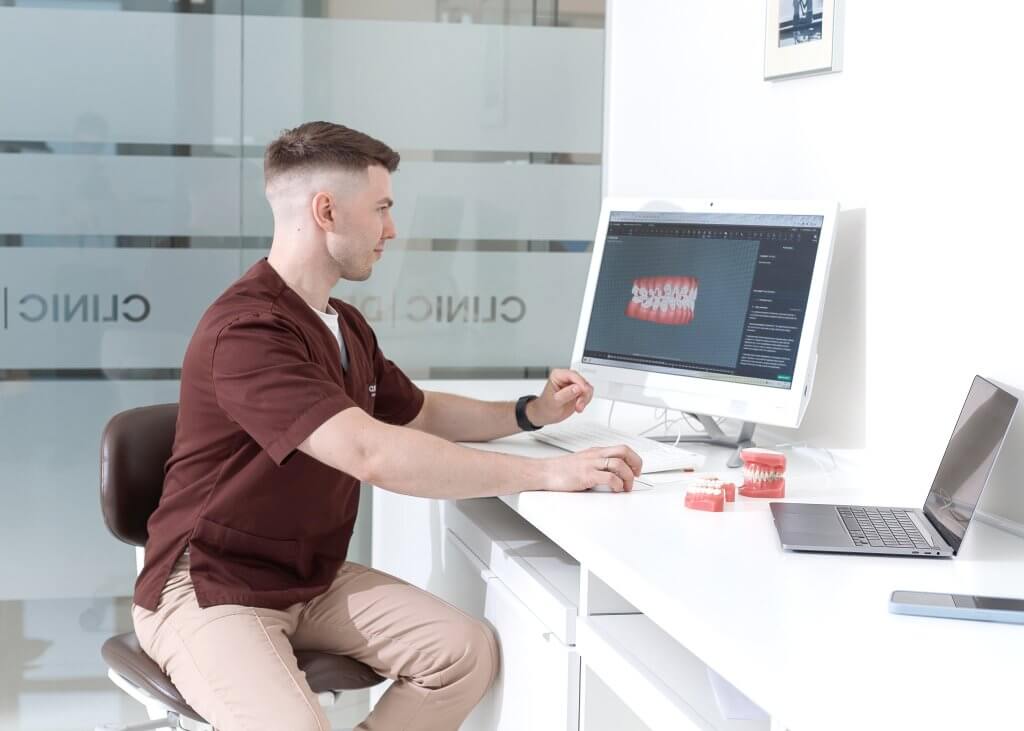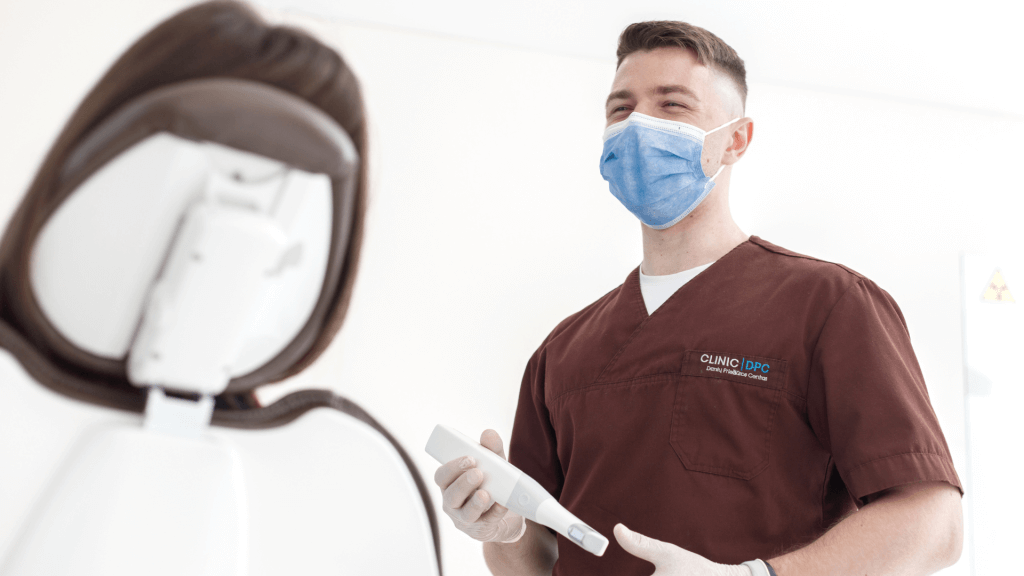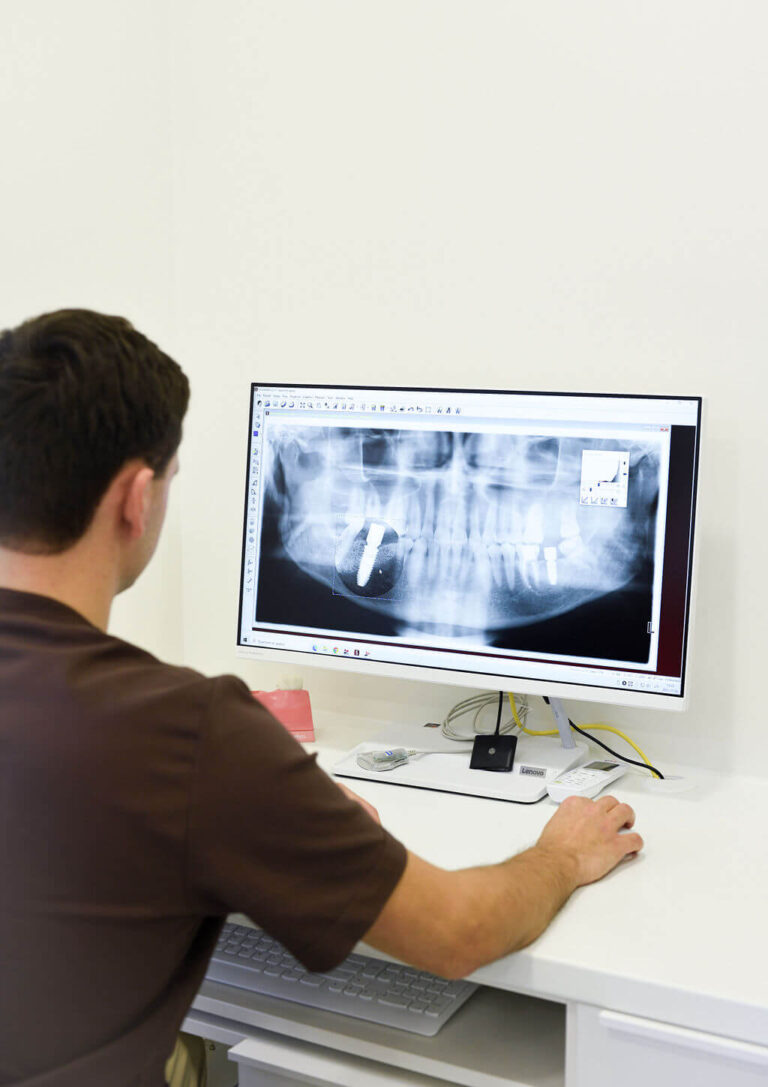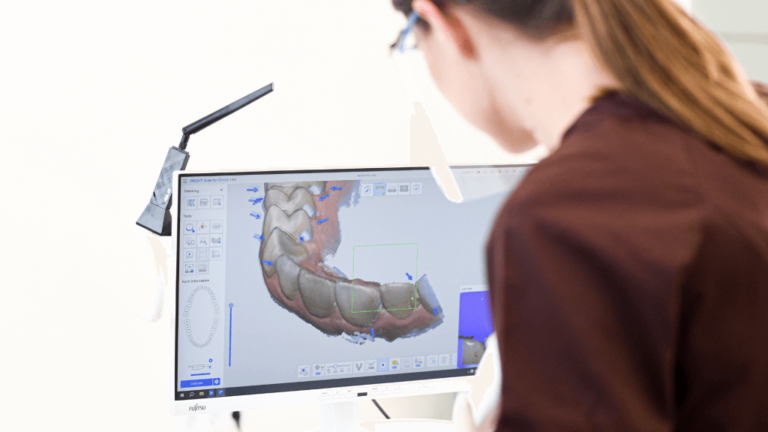Even though we live in a time when medical help is readily available to everyone, there are still cases where parents dismiss their child’s irregularly growing teeth out of hand. However, doctors warn that this is definitely not the right thing to do. An irregular bite can lead to much more serious problems in the future and can lead to complexes that are difficult to overcome and a lack of self-confidence. So what are the signs that a child may need orthodontic treatment? What are the consequences of not starting orthodontic treatment in time? Orthodontist Jonas Sutkus at CLINIC | DPC answers these and other questions.
First visit to the orthodontist – at the age of eight
The fact that the problem of orthodontic anomalies in our country is particularly acute is proven by a study conducted by Dr D. Baubinienė in 2010. It was found that orthodontic anomalies are very common among Lithuanian students: they were identified in 77% of students aged 10–11 and 61.7% of students aged 14–15. Orthodontic treatment is needed for nearly half (49.6%) of younger students and one in three (34.1%) older students. Unfortunately, the situation has not improved to this day.
To reduce these numbers significantly, parents need to pay closer attention to their children’s dental health. The first visit to the orthodontist should take place around the seventh or eighth year of a child’s life. Early detection of orthodontic anomalies will make their treatment much easier, says J. Sutkus.
“During a child’s first visit to the orthodontist, the number of permanent teeth, the position of the permanent teeth, the progress of tooth replacement, jaw development, the condition of the bite, and the necessary orthodontic treatment are assessed. Early diagnosis and treatment of orthodontic problems, when the jaws and teeth are still growing, makes the treatment easier, more effective, shorter and helps to avoid complicated orthodontic treatment in the future,” says J. Sutkus.
Mouth breathing can also cause malocclusion
Many factors can cause crooked teeth and malocclusion in children, he says. Some of the most common are genetics, mouth breathing or using a pacifier for too long.
“Malocclusion can be influenced by genetics – it can be inherited from generation to generation. It can also be caused by certain habits: finger-sucking, incorrect tongue positioning, using a pacifier too long. Mouth breathing can also interfere with normal jaw development. Premature loss or removal of deciduous teeth can also lead to malocclusion, which can lead to a lack of space for permanent teeth. Of course, there are also various traumas and cancers that can cause these problems,” says the orthodontist.
It can start with simple tooth decay
Even something as simple as untreated tooth decay can cause orthodontic problems for a child, J. Sutkus reveals, so even seemingly minor complaints should not be ignored.
“Tooth decay can severely damage tooth tissue or lead to complete tooth loss. When the milk teeth are damaged by decay or removed prematurely for this reason, the space in the jaw is reduced and there is not enough room for the permanent teeth to grow in. When the permanent teeth are severely damaged by decay, the bite is also affected – adjacent teeth migrate out of place and those that should be in contact with the lost or damaged tooth become elongated,” says the specialist.
The need for treatment is betrayed by the obvious
According to the orthodontist at CLINIC | DPC, there are a number of signs that may indicate the need for orthodontic treatment in a child. Parents should pay attention if their child has difficulty chewing, loses milk teeth prematurely, or if they take too long to become permanent teeth, he says.
“The first sign that parents notice is crowding or crooked teeth. Bite problems are also clearly noticeable. In a cross-bite, the lower teeth overlap the upper ones. When the bite is too deep, the upper front teeth cover most of the lower front teeth. And if the bite is open, the teeth are not in contact with each other, and there is an increased space between the upper and lower teeth when the teeth are fully erupted. Mouth breathing, speech problems, lower jaw pain or clenching and facial asymmetry may also indicate the need for orthodontic treatment,” says the orthodontist.
Delayed treatment leads to serious problems
According to the doctor, failure to start orthodontic treatment in childhood can have serious and sad consequences.
“Orthodontic anomalies left untreated in childhood can cause both physical and psychological harm. Untreated physical issues, such as dental misalignment or malocclusion, can lead to pathological tooth wear, damage to periodontal tissues, or even temporomandibular joint (TMJ) disorders and headaches. Orthodontic treatment can be applied later in adulthood, but it often becomes more difficult, longer, and more expensive, and complete correction may not always be possible. Not to mention the psychological harm caused by bullying due to orthodontic anomalies. Low self-esteem and a lack of self-confidence are generally difficult to assess and correct,” warns the orthodontist.
Treatment is easier than for adults
When asked whether orthodontic treatment for children differs from that for adults, J. Sutkus says that it is much simpler in childhood.
“The growth of the jaws observed in children facilitates the treatment of certain orthodontic anomalies and allows the use of simpler, less invasive and cheaper orthodontic appliances. Children’s jaws and teeth are also more easily affected by orthodontic appliances, so treatment is often shorter and simpler. Dental and periodontal diseases are also more common in older age and should be addressed before orthodontic treatment – even when cured or stabilized, these diseases can complicate orthodontic treatment,” says J. Sutkus.
The orthodontist says that the treatment methods used depend on the bite problem, the motivation of the patient and the parents, and the level of cooperation, and can be very varied.
“From the elimination of bad habits, myofunctional therapy, removable orthodontic appliances to fixed orthodontic appliances. Often the appliances and methods are simpler compared to those used for adults, but there are situations that require braces or caps, which are also prevalent in adult treatment,” says the specialist about the treatment methods.
Proper care is key
Once orthodontic treatment has been prescribed – with braces or removable appliances – it is important to pay special attention to their proper care. J. Sutkus says that teeth and orthodontic appliances should be cleaned three times a day. In the morning, afternoon and evening after meals, a soft brush and fluoride toothpaste should be used to thoroughly clean all surfaces of the teeth and orthodontic appliances, leaving no plaque residue. He points out that special single-tooth brushes, inter-dental floss and rinses can also be used to clean the teeth and appliances. Some removable appliances need to be soaked regularly in a special solution of disinfectant tablets and stored in a special box when the appliance is not in the mouth. The specialist reminds you to have regular professional oral hygiene every 4-6 months.






